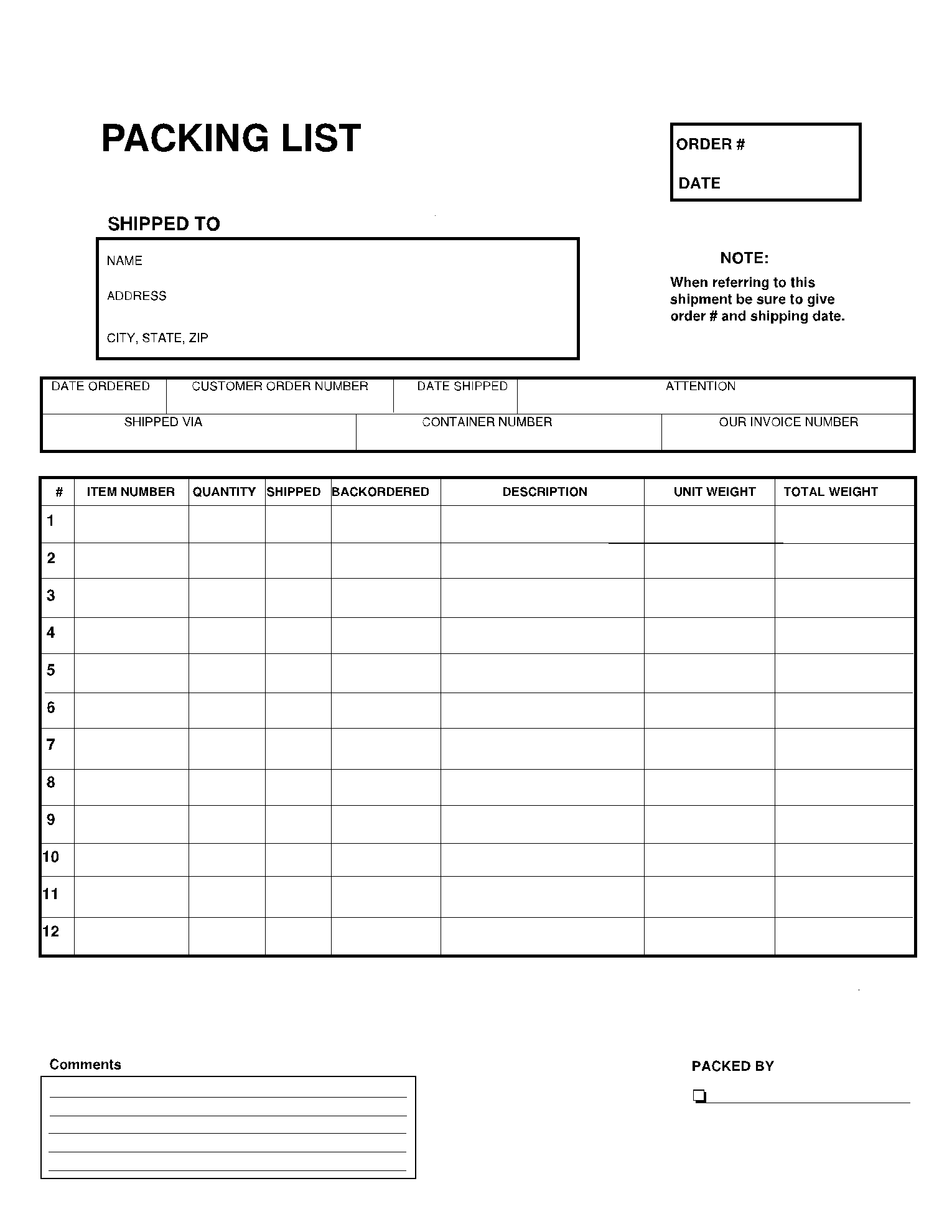Part 1: Everything on a Packing List
Packing lists are documents that come with deliveries of packages, often attached to the package itself or kept in an envelope on the package. These packing lists provide information about what is inside the package, how much it weighs, its measurements, and so on.
These packet lists are integral to every package and play a crucial role as freight forwarders use them to know important details about the package without opening it up. A simple glance at the package and everything about the package is known to the concerned parties. Domestic packages will have the packing list inside the delivery box.
However, for international deliveries, the package list will be affixed to the container. Additionally, package lists are also used by US customs officials for similar purposes as stated above.
Part 2: Details Needed On A Packing List
Package lists tell about the contents inside the package, but that’s not all, as additional information is required on package lists, as explained below.
1 – Exporter’s Details
Information such as the company’s name, address, logo, and contact details are required here.
2 – Consignee/Buyer
Basic details are added in the form, such as name, address, and personal contact details.
3 – Shipping Details
The package might go through several parties before getting delivered to the consignee, which is why accurate shipping details are required here to help all the concerned parties.
Information about the method of dispatch, the origin of the package, final destination of the package, date of departure, date of arrival, and in some cases, the name of the vessel/Aircraft are also included.
4 – Additional Information
Everything additional is included here, such as reference numbers, important dates, Export Invoice numbers, delivery details, and packing information.
5 – Product and Packaging Details
For the freighters to carry the package safely and several other reasons, detailed information about the packing of the products must be included on the package list. Apart from packing information, description of the goods, number of products, net weight, and measurements are all included here.
Part 3: How to Complete a Packing List Template Correctly?
The package list must be filled with as much information as possible for all the parties concerned. Additionally, care must ensure the most accurate information is written on the package list to avoid legal and custom problems. Here we detail how to fill a packing list so your package is delivered safely.
Although templates may vary, most packet lists are more or less the same in their requirements.
Section 1 - Date and order number

Enter here the date and the order number. An order number is a unique set of codes that are used for keeping track of the order. The tracking number of a package is issued by the courier service being used for deliverance. It is also provided to the consignee so that they can keep track of the package.
Section 2 - Shipping details

Here the information of the consignee must be included. Details such as the name, address, city, and contact details of the consignee will be required.
Section 3 - Additional shipping information

The exporter should not fill this part. Instead, it will be filled by the concerned parties as it includes details that identify the package’s progress throughout its delivery. Information such as customer order number, date shipped, date ordered, container number, etc., will be entered here.
Section 4 - Package Details

The most important and detailed part of the package list begins here. Detailed information on each package, along with the quantity of the items, will be included here. The exporter will also have to fill the unit weight, the total weight, and a short description of each included item.
Part 4: What is the Utility of a Packing List Form?
A package list is a crucial part of a delivery package. The exporter must include this list and the package whenever the goods travel by sea, road, air, or railway. One can use this list for several reasons, including:
- Helping custom officers figure out what’s in the package without opening
- Assisting freight owners to determine the shipping cost
- Safety of the package
- Delivering the package to the right address
Packing lists also differ according to where it’s being delivered. Domestic package lists are relatively short, while international package lists are supposed to be as detailed as they can be. Since the package must go through several parties, it must be ensured that the package list meets the requirements of all the parties.
Part 5: Who Should Fill a Packing List Template?
Firstly, the exporter will need the packing list template to fill in all the details about the package and get it delivered to the consignee. Then the transporter will need to issue a Bill of Lading, an important document required whenever delivery problems occur with the package.
Moreover, the list also helps customs officials. It provides them with Electronic Export Information which is necessary to verify what’s inside the packages.
The package list is also important for both exporters and buyers. Exporters of the package can use the package list to ensure every detail has been entered correctly and if the appropriate contents are being shipped to the buyer.
Whereas for buyers, the package list can confirm if the package contains the ordered products, helping the buyer verify the contents without even opening the package.
Part 6: Some Additional Packing List Templates
If you are looking for more information about this topic, an official government resource you can look into that details the process.
https://www.trade.gov/packing-list
